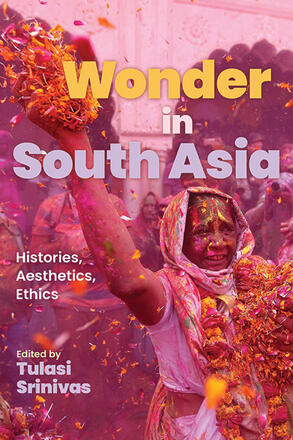
Wonder in South Asia
Histories, Aesthetics, Ethics
Alternative formats available from:
A comparative study of wonder in South Asian religions.
Description
The experience of wonder—encompassing awe, bewilderment, curiosity, excitement, fear, dread, mystery, perplexity, reverence, surprise, and supplication—and the ineffable quality of that which is wondrous have been entwined in religion and human experience. Yet strangely, wonder in non-western societies, including South Asia, has rarely been acknowledged or understood. This groundbreaking volume brings together historians and ethnographers of South Asia, including leading and emerging scholars, to consider the place and meaning of wonder in such varied joyful, tense, and creative sites and moments as Sufi music performances in Gujarat, Tamil graveyard processions, trans women's charitable practices, Kipling's Orientalist tales, village Kuchipudi dance performances, and Rajasthani healing shrines. Offering a synthetic and scholarly reading of wonder that speaks to the political, aesthetic, and ethical worlds of South Asia, these essays redefine the nature and meaning of wonder and its worlds. Taken together, they provide an invaluable research tool for those in the fields of Asian religion, religion in context, and South Asian religions in particular.
Tulasi Srinivas is Professor of Anthropology, Religion, and Transnational Studies at Emerson College. She is the author of The Cow in the Elevator: An Anthropology of Wonder and Winged Faith: Rethinking Religious Pluralism and Globalization through the Satya Sai Movement, and the coeditor, with Krishnendu Ray, of Curried Cultures: Globalization, Food, and South Asia.
Reviews
"Exploring manifold manifestations and encounters of wonder in various regions and religions of South Asia, this volume refines scholarly engagement with wonder both as a theoretical category that expands our understanding of South Asian religion and as a meaningful, affective constituent of the religious and ethnographic experience. The strength of the collection lies in the breadth of its case studies, which range across the subcontinent, and its depth of application within each of the chapters." — Caleb Simmons, author of Singing the Goddess into Place: Locality, Myth, and Social Change in Chamundi of the Hill, a Kannada Folk Ballad